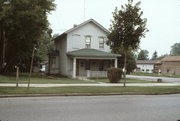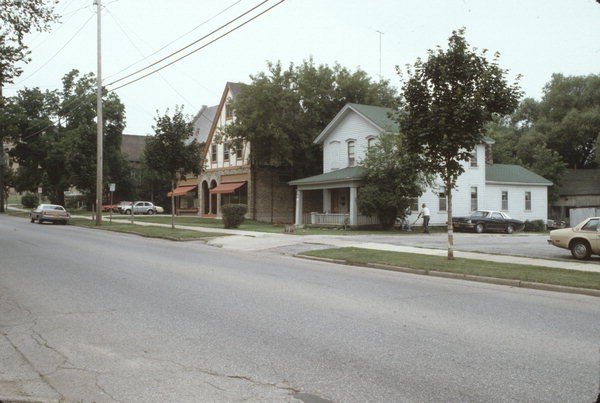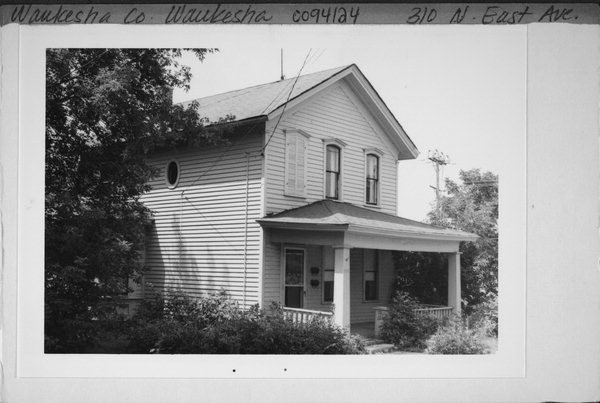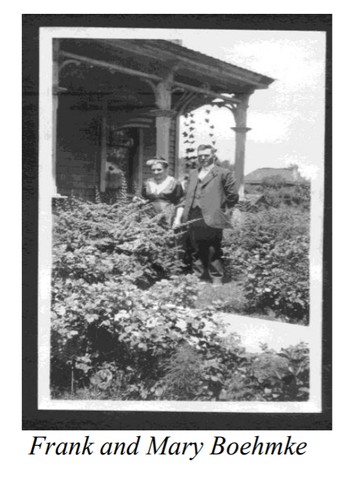Boehmke House
Introduction
Text-to-speech Audio
Images
Boehmke House

Boehmke House

Boehmke House

Frank & Mary Boehmke

Backstory and Context
Text-to-speech Audio
The College of Health Sciences building is housed in a historic building located at 310 N East Avenue. This property was originally owned by the Hadfields,who owned the local quarry that produced the limestone used in the construction of Main Hall. Sometime in the mid to late 1870s, the Hadfields sold the 310 N East Avenue property was to well-known Waukesha grocer Thomas Ryall and his wife Elizabeth Frances Ryall. The Ryalls built the home that stands on the property today. So, the story of the house itself begins with a businessman (coincidentally, business is also one of Carroll’s top majors).
The next occupants were Ira and Alma Pool, who bought the house about 1889. This family reflects the innovative spirit that Carroll encourages in their community. Ira was a Civil War veteran who owned the first cider mill in Waukesha; he also operated saloons with his two sons. Alma was something of an entrepreneur/inventor, and obtained two patents in the 1890s: one was an improvement to the ironing board, and the other a skirt and waist holder. This was a particular accomplishment since the patents are listed directly under her name, rather than that of a male relative, which was common at the time. After Alma died of cancer in 1903, Ira sold the house and built a (still-standing) log home on N. West Ave. He later explained that he preferred to die in a log home similar to the one he was born in.
The East Avenue house was rented out by a real estate manager John Peterson until 1914, when Frank J Boehmke and his wife Mary bought the home. Frank was a painter and decorator, and his family owned the house until 1991. The Boehmke family albums were invaluable in Carroll’s efforts to renovate and restore the house.
The final owner of the property before it was sold to Carroll was Joyce Bussian, who operated a hair salon out of the house.
The house saw many occupants and many purposes before it became home to Carroll's College of Health and Sciences, just as Carroll students explore several different avenues during their time on campus. When the foundation is strong, many pioneering paths are possible.
Sources
Emery, Mary. 2012. "Ryall-Pool-Boehmke House - 310 N. East Avenue." Preservation Profiles. no. 1 (fall). http://www.waukeshapreservation.org/news/fallnewsletter-final-2.pdf.
Waukesha Preservation Alliance, Accessed June 30, 2020, http://waukeshapreservation.org/2013/05/2013-landmark-commission-schoenknecht-award-winner/
Wisconsin Historical Society, Wisconsin Architecture and History Inventory, 310 N East Ave, Waukesha, Waukesha, Wisconsin, 94124.
Wisconsin Historical Society, Wisconsin Architecture and History Inventory, 310 N East Ave, Waukesha, Waukesha, Wisconsin, 94124.
Wisconsin Historical Society, Wisconsin Architecture and History Inventory, 310 N East Ave, Waukesha, Waukesha, Wisconsin, 94124.
Wisconsin Historical Society, Wisconsin Architecture and History Inventory, 310 N East Ave, Waukesha, Waukesha, Wisconsin, 94124.
Emery, Mary. 2012. "Ryall-Pool-Boehmke House - 310 N. East Avenue." Preservation Profiles. no. 1 (fall). http://www.waukeshapreservation.org/news/fallnewsletter-final-2.pdf.
